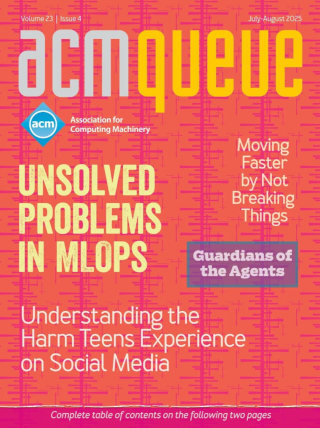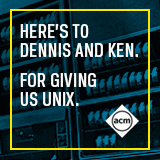
Another Day, Another Bug:
We asked our readers which tools they use to squash bugs. Here’s what they said.
As part of this issue on programmer tools, we at Queue decided to conduct an informal Web poll on the topic of debugging. We asked you to tell us about the tools that you use and how you use them. We also collected stories about those hard-to-track-down bugs that sometimes make us think of taking up another profession.
Coding Smart: People vs. Tools:
Tools can help developers be more productive, but they’re no replacement for thinking.
Cool tools are seductive. When we think about software productivity, tools naturally come to mind. When we see pretty new tools, we tend to believe that their amazing features will help us get our work done much faster. Because every software engineer uses software productivity tools daily, and all team managers have to decide which tools their members will use, the latest and greatest look appealing.
A Conversation with Wayne Rosing:
How the Web changes the way developers build and release software
Google is one of the biggest success stories of the recent Internet age, evolving in five years from just another search engine with a funny name into a household name that is synonymous with searching the Internet. It processes about 200 million search requests daily, serving as both a resource and a challenge to developers today.
Debugging in an Asynchronous World:
Hard-to-track bugs can emerge when you can’t guarantee sequential execution. The right tools and the right techniques can help.
Pagers, cellular phones, smart appliances, and Web services - these products and services are almost omnipresent in our world, and are stimulating the creation of a new breed of software: applications that must deal with inputs from a variety of sources, provide real-time responses, deliver strong security - and do all this while providing a positive user experience. In response, a new style of application programming is taking hold, one that is based on multiple threads of control and the asynchronous exchange of data, and results in fundamentally more complex applications.
Spam, Spam, Spam, Spam, Spam, the FTC, and Spam:
A forum sponsored by the FTC highlights just how bad spam is, and how it’s only going to get worse without some intervention.
The Federal Trade Commission held a forum on spam in Washington, D.C., April 30 to May 2. Rather to my surprise, it was a really good, content-full event. The FTC folks had done their homework and had assembled panelists that ran the gamut from ardent anti-spammers all the way to hard-core spammers and everyone in between: lawyers, legitimate marketers, and representatives from vendor groups.
User Interface Designers, Slaves of Fashion:
The status quo prevails in interface design, and the flawed concept of cut-and-paste is a perfect example.
The discipline, science, and art of interface design has gone stagnant. The most widely read books on the subject are primarily compendia of how to make the best of received widgets. The status quo is mistaken for necessity. Constrained in this chamber pot, designers wander around giving the users of their products little comfort or fresh air.
Code Spelunking: Exploring Cavernous Code Bases:
Code diving through unfamiliar source bases is something we do far more often than write new code from scratch--make sure you have the right gear for the job.
Try to remember your first day at your first software job. Do you recall what you were asked to do, after the human resources people were done with you? Were you asked to write a piece of fresh code? Probably not. It is far more likely that you were asked to fix a bug, or several, and to try to understand a large, poorly documented collection of source code. Of course, this doesn’t just happen to new graduates; it happens to all of us whenever we start a new job or look at a new piece of code. With experience we all develop a set of techniques for working with large, unfamiliar source bases. This is what I call code spelunking.
No Source Code? No Problem!:
What if you have to port a program, but all you have is a binary?
Typical software development involves one of two processes: the creation of new software to fit particular requirements or the modification (maintenance) of old software to fix problems or fit new requirements. These transformations happen at the source-code level. But what if the problem is not the maintenance of old software but the need to create a functional duplicate of the original? And what if the source code is no longer available?



